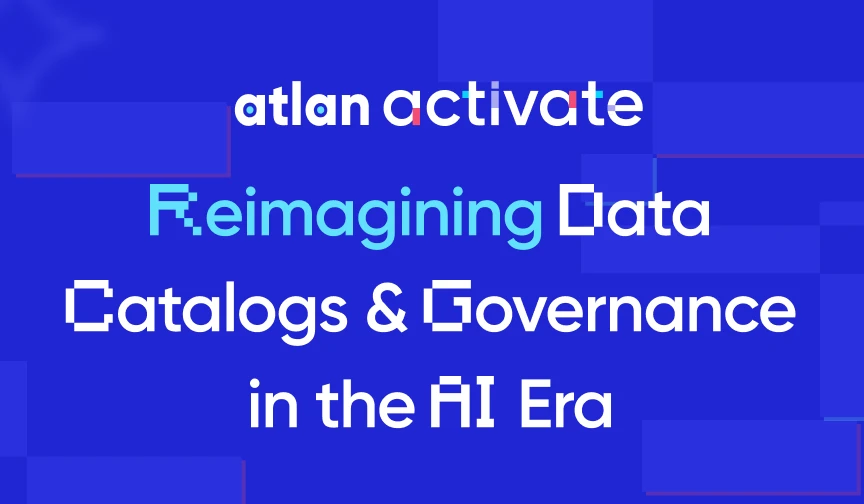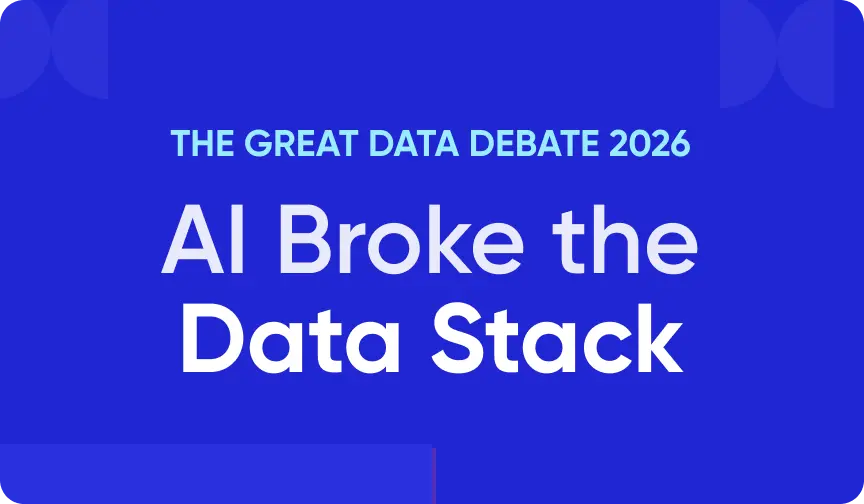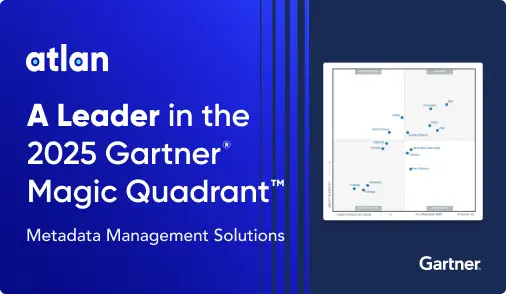Compliance Metadata Management: The Key to Meeting AI & Data Regulations at Scale in 2025

Last Updated on: December 09th, 2025 | 12 min read
Compliance metadata management involves organizing, tracking, and governing metadata to demonstrate that your data meets legal, regulatory, and internal standards. It is critical for avoiding fines, preventing breaches, and maintaining audit readiness.
As AI adoption accelerates, new risks around consumer privacy and security have driven a wave of global regulations. In response, many binding regulations have been passed globally to protect consumer privacy, security, and rights.
Yet a major challenge remains: how to comply with these regulations, and what is truly required to do so at scale? This article will cover:
- Key ideas behind metadata management for compliance
- Major AI-related regulations you must know
- Metadata management tools and technologies for achieving AI compliance
- Why a unified metadata control plane is essential for compliance metadata management at scale
Table of contents
Permalink to “Table of contents”- Why is metadata ever more important for AI compliance?
- What are the biggest AI-related regulations and their compliance requirements?
- How does metadata compliance management help with AI regulations? An overview of tools and processes
- How does Atlan’s metadata control plane support compliance metadata management and drive AI compliance?
- Summary
- Compliance metadata management: Frequently asked questions (FAQs)
Why is metadata ever more important for AI compliance?
Permalink to “Why is metadata ever more important for AI compliance?”When GDPR came into effect in 2018, it primarily targeted how companies collected, stored, and shared personal data through deterministic systems.
Today’s AI systems are different. Most models, especially in generative AI, are non-deterministic black boxes and often opaque in how they process data. This black-box nature makes metadata crucial.
It’s becoming increasingly important to track and store metadata related to data consumption and processing by AI systems. The more detailed the metadata, the better organizations can demonstrate responsible AI practices and prevent AI misuse, especially in sensitive areas like insurance claims, loans, or voting rights.
Think of metadata as the core evidence needed to defend decisions, ensure transparency, and maintain customer trust under scrutiny.
To build effective compliance programs, organizations must first understand exactly what types of metadata need to be captured. Let’s explore this further.
What metadata should you track to become compliance-ready?
Permalink to “What metadata should you track to become compliance-ready?”Building an audit-ready metadata system starts with collecting metadata across key activities involving AI systems. The metadata collected should provide a complete picture of the following:
- Data lineage: To track how data was collected, transformed, and used across systems
- Audit logs: To trace all the activities that have happened between various systems (and humans), from input to output
- Decision logs: To ensure visibility into critical decisions made by AI systems
Moreover, there’s also a need to track access and changes to these systems to answer the following set of questions:
- Code changes: How did their code change when bug fixes, patches, etc., were applied to the codebase?
- Access control: Which systems or people have access to the AI systems to intervene?
- System testing: What tests have been conducted, and how did the AI systems perform on those tests?
- Training data: How were the models behind these AI systems trained? What data did they use for training?
This holistic view of metadata is critical to meeting upcoming audit requirements under laws like the EU AI Act and U.S. state-level regulations. Next, let’s explore how global regulations are shaping metadata compliance needs.
What are the biggest AI-related regulations and their compliance requirements?
Permalink to “What are the biggest AI-related regulations and their compliance requirements?”Before discussing regulations for specific jurisdictions, let’s first gain a broad understanding of the objectives they aim to achieve.
AI regulation, much like GDPR and CCPA, intends to protect consumers from the use of copyrighted data, misuse of biometrics, and undeclared human impersonation in chat, voice, or video calls, among other things.
While AI companies today implement guardrails like prompt filtering and fine-tuning to limit misuse, these are largely voluntary and often insufficient for real accountability. To meet compliance requirements, organizations must go beyond model-level controls. They need to systematically track metadata.
In the next sections, we’ll explore two critical examples: the EU Artificial Intelligence Act and recent developments in US AI legislation. Understanding these regulations will show why collecting the right metadata today is essential to avoid multimillion-dollar penalties tomorrow.
Let’s start by looking at the most mature regulatory framework for AI today — the EU Artificial Intelligence Act.
What do you need to comply with the EU Artificial Intelligence Act?
Permalink to “What do you need to comply with the EU Artificial Intelligence Act?”The EU AI Act holds both providers (of general-purpose AI models) and deployers (organizations that use the provider models) accountable.
Some of the key obligations of deployers are:
- Transparency to end-users: Disclose when customers are interacting with AI systems (e.g., synthetic media, AI agents). For example, the usage of AI-generated synthetic data or a human-sounding AI agent handling a call center should be disclosed right away.
- Human oversight: Have human oversight over any critical interactions and decision points which might be deemed high risk, i.e., automatically rejecting a healthcare claim based on a chat-based interaction with an AI agent.
- Monitoring and alerting: Have monitoring and alerting systems in place to raise alarms around any major outliers or unusual AI behaviors.
- Training programs: Educate your organization’s workforce and also the end-user in the use and awareness of AI systems.
Deployers can be fined anywhere between €7.5 million and €35 million for non-compliance when dealing with AI systems and practices deemed to be of unacceptable or high risk.
Read more → The EU AI Act: What does it mean for you?
To avoid these high fines, deployers must invest early in metadata systems that track AI interactions, decisions, and interventions to meet these requirements.
Meanwhile, in the U.S., a different but fast-evolving approach to AI regulation is taking shape at the state level. Let’s explore further.
What do you need to comply with AI laws and regulations in the U.S.?
Permalink to “What do you need to comply with AI laws and regulations in the U.S.?”The U.S. has had a very different stance from the EU on AI regulation, especially after Executive Order 14179, which called for “Removing Barriers to American Leadership in Artificial Intelligence.”
U.S. regulation is currently more fragmented but gaining momentum. Key developments include:
- California’s Generative AI Training Data Transparency Act forces businesses to disclose how models they’re using have been trained, specifically on education, health, and journalism.
- Colorado’s AI Act somewhat follows the EU AI Act model. It distinguishes clearly between developers and deployers and mandates AI-based risk assessment programs and frameworks, along with other reporting obligations around AI decision-making.
- Utah’s Artificial Intelligence Policy Act specifically deals with the misuse of AI for deceptive and manipulative practices in customer interactions for sales, marketing, services, among other things.
These laws collectively call for more oversight, better compliance reporting, and enhanced end-user awareness of AI programs. Metadata visibility is the common thread across these legislations, as organizations are being asked to track how AI systems behave, what data they consume, and how decisions are made.
So how do organizations translate regulatory obligations into practical compliance strategies? This requires a combination of people, processes, and technology, powered by effective metadata management.
Let’s dive into the tools and technologies needed to operationalize compliance metadata management.
How does metadata compliance management help with AI regulations? An overview of tools and processes.
Permalink to “How does metadata compliance management help with AI regulations? An overview of tools and processes.”Complying with AI regulations requires structured metadata collection and governance across systems. The right tools and processes help organizations with extensive metadata collection, retention, and overall management. You should also have relevant frameworks, as prescribed in the regulations, in place within your organization.
Some examples of these tools and processes are as follows:
- Assess AI risks: A data and AI governance framework that allows you to assess the risks related to AI and mitigate them proactively
- Catalog and govern data assets: A data cataloging and governance tool that lets you build data and AI governance foundations on top of a metadata control plane
- Trace lineage: A data lineage tracking framework and visualization tool that lets you trace data lineage from the data’s source to its consumption
- Embed collaboration: A process for technical and usage documentation that allows easy visibility into how various systems are supposed to interact with AI
- Maintain audit trails: A process for detailed audit trail of changes made to how AI is deployed or used by deployers to ensure there’s no misuse
- Establish reporting processes: A framework for reporting back to the regulatory body (one of the most important requirements) to build trust with the regulatory body and end-users
- Monitor and alert: A tool (or a set of tools) for alerting, monitoring, and observability that provides extensive visibility into data flows across the board
Many of these tools and processes revolve around metadata collection and management, which is why it is crucial to have a single place where you can manage all your organization’s metadata.
For instance, the cataloging and governance tool is based entirely on a metadata foundation, and the audit trail itself comprises usage and access metadata.
Regulatory reporting only works if the meaning (captured in the metadata-based business glossary) of the reports and metrics is clear to the business. That’s where a metadata control plane like Atlan can help your organization meet its regulatory and compliance obligations.
How does Atlan’s metadata control plane support compliance metadata management and drive AI compliance?
Permalink to “How does Atlan’s metadata control plane support compliance metadata management and drive AI compliance?”Many of Atlan’s core features, including data cataloging, governance, lineage, and monitoring, are powered by the metadata control plane. This horizontal layer spans all of your organization’s systems, integrations, and data platforms, whether internal or external.
Atlan’s metadata control plane provides the connective tissue needed to support compliance at scale, with capabilities such as:
- Data access control for auditability, usage tracking, and traceability
- Data quality monitoring for preventing bias in training data sets
- Policy enforcement for ensuring data is only accessed by the right systems under the right circumstances
- Granular data lineage for tracing the journey of data from source to destination, ensuring that the data was not modified in an undue manner
- Business glossary for bringing context and meaning to data assets
- Data product marketplace for ensuring that even from external data consumers or providers, there’s transparency and visibility in terms of data access and use
For enterprises managing petabyte-scale estates across multiple jurisdictions, Atlan offers a proven foundation to reduce compliance risk while enabling responsible data and AI innovation.
Here’s a real-world example of how a financial enterprise successfully scaled governance and compliance using Atlan’s metadata-driven approach.
How North scaled data governance and compliance with Atlan
Permalink to “How North scaled data governance and compliance with Atlan”North, a leading payments solution provider with $100+ billion annual transactions, needed to classify and govern 225K+ assets in Snowflake to meet FINRA and PCI-DSS mandates.
North activated Snowflake’s Dynamic Data Masking (DDM) using Atlan’s Playbooks, Atlan Playbooks, rules-based bulk automations, identifying thousands of assets and automatically applying actions, such as adding chosen tags and policies.
Then, with Atlan’s Two-way Tag Sync, classified fields were synced back into Snowflake metadata—driving dynamic masking and RBAC policies at query time. As a result, North successfully governed thousands of data assets in record time, avoiding the painstaking work of identifying, tagging, and recording policies one-by-one across a 225,000-asset landscape.
Metadata was central to this success, with standardized tags, business glossary entries, automated lineage, and metadata-backed rules for flagging policy non-compliance, among others.
Summary
Permalink to “Summary”Compliance metadata management is becoming a foundational requirement for enterprises using AI and sensitive data. Metadata is the core ingredient of regulatory compliance, as it unlocks data governance, access control, audit trails, data lineage, and numerous other relevant use cases.
Atlan’s metadata control plane centralizes metadata across systems, accelerates audit readiness, and helps enterprises meet complex compliance requirements with confidence. You should check it out, especially if you’re looking to get started with addressing your organization’s AI compliance requirements.
Compliance metadata management: Frequently asked questions (FAQs)
Permalink to “Compliance metadata management: Frequently asked questions (FAQs)”1. What is compliance metadata management?
Permalink to “1. What is compliance metadata management?”Compliance metadata management is the practice of tracking, organizing, and governing metadata to demonstrate that your data and AI systems comply with regulatory, legal, and internal requirements.
2. Why is metadata critical for AI compliance?
Permalink to “2. Why is metadata critical for AI compliance?”In highly regulated industries like finance and healthcare, AI decisions can impact customer trust, privacy, and safety. Metadata enables organizations to prove how sensitive data is collected, processed, and used, supporting auditability and preventing regulatory violations.
3. What are the risks of poor compliance metadata management?
Permalink to “3. What are the risks of poor compliance metadata management?”Without strong compliance metadata management, organizations risk failing audits, missing regulatory reporting requirements, or being unable to explain AI or data-driven decisions. This can lead to fines, lawsuits, reputational harm, and restrictions on the use of sensitive or regulated data.
4. What metadata must organizations track for AI compliance?
Permalink to “4. What metadata must organizations track for AI compliance?”You should track metadata such as data lineage, access logs, decision logs, code changes, system testing results, and training datasets. This metadata creates an auditable trail, showing how data flows, how AI systems are monitored, and how regulatory risks are managed over time.
5. Who should own compliance metadata management inside an organization?
Permalink to “5. Who should own compliance metadata management inside an organization?”Typically, ownership sits jointly between data governance teams, data product managers, and compliance officers, with operational support from data engineers and system owners. Clear accountability weaved into data governance workflows help define who maintains, audits, and reports on metadata assets.
6. What capabilities are needed to support compliance metadata management?
Permalink to “6. What capabilities are needed to support compliance metadata management?”Key capabilities include:
- Data catalogs for metadata discovery
- Lineage tracking
- Policy management
- Observability and monitoring
- Audit trail generation
These capabilities must work together under a unified metadata control plane.
7. How does a metadata control plane help with compliance?
Permalink to “7. How does a metadata control plane help with compliance?”A metadata control plane connects metadata across different systems, providing a unified view of data usage, access, and processing. It simplifies regulatory reporting, improves audit readiness, and ensures that compliance policies can be consistently applied across complex hybrid and multi-cloud environments.
Share this article
Atlan is the next-generation platform for data and AI governance. It is a control plane that stitches together a business's disparate data infrastructure, cataloging and enriching data with business context and security.
Compliance metadata management: Related reads
Permalink to “Compliance metadata management: Related reads”- What is Data Governance? Its Importance, Principles & How to Get Started?
- Data Governance and Compliance: An Act of Checks & Balances
- Data Governance and GDPR: A Comprehensive Guide to Achieving Regulatory Compliance
- Data Compliance Management in 2026
- Automated Data Governance: How Does It Help You Manage Access, Security & More at Scale?
- Enterprise Data Governance Basics, Strategy, Key Challenges, Benefits & Best Practices
- Data Governance in Banking: Benefits, Challenges, Capabilities
- Financial Data Governance: Strategies, Trends, Best Practices
- BCBS 239 Data Governance: What Banks Need to Know in 2026
- Financial Data Compliance Software: What Qualities Matter in 2026
- AI for Compliance Monitoring in Finance: Use Cases & Setup
- Unified Control Plane for Data: The Future of Data Cataloging





















